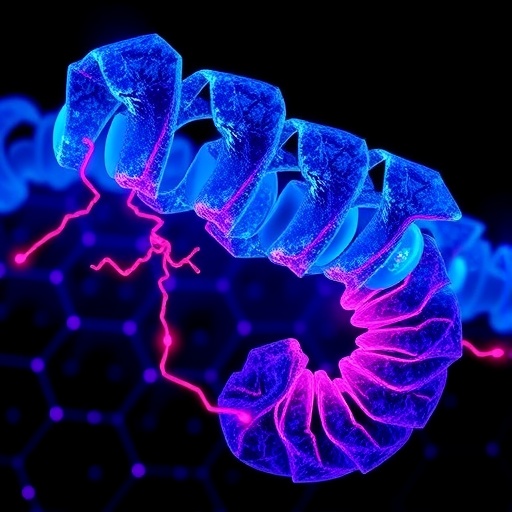DENVER -Subsolid nodules (SSN) can be considered a biomarker of lung cancer risk and should be managed with long-term active surveillance. Conservative management of SSN will reduce unnecessary surgery and overtreatment in patients with multiple comorbidities and aggressive lung cancer arising from lung sites other than the SSN.
Lung cancer is the leading cause of cancer-related deaths in the world. Typically, symptoms of lung cancer don't appear until the disease is already at an advanced, non-curable stage. Lung cancer screening by low-dose computed tomography (LDCT) allows for early detection and early treatment of lung cancer thereby reducing lung cancer-related deaths. However, LDCT does have its limitations such as finding abnormalities that are noncancerous, requiring the patient to have additional testing, as well as diagnosing and treating malignancies that would have not affected the patient's life expectancy. Overdiagnosis and overtreatment are often seen in slow-growing lung adenocarcinomas represented by SSN. Unfortunately, the resection of SSN might not be clinically advantageous and may result in cardiopulmonary damage in patients with multiple comorbidities. Therefore, treatment by resection verses surveillance for persistent SSN remains controversial.
A group of European investigators evaluated the risk of lung cancer and lung cancer-related death in patients with unresected SSN over a period of almost 10 years, and analyzed whether cancer arose from the SSN. The aim was to determine the long-term outcome of patients with unresected SSN in lung cancer screening. In 2005, the Multicenter Italian Lung Detection (MILD) screening trial implemented active surveillance for persistent SSN as opposed to early resection. The results of this study were based on the 2,303 patients randomized to the LDCT arm (age 58.1 ± 5.9 years, cumulative tobacco exposure 43.6 ± 21.5 pack years) of the MILD screening trial. Patients with SSN were selected by visual analysis and computer aided diagnosis (CAD). All SSN were classified into non-solid nodules (NSN) or part-solid nodules (PSN) and were measured by volumetric semi-automatic segmentation. The volume of SSN was measured including the whole non-solid component (NSN and PSN) and the solid component (PSN). The risk of overall mortality and lung cancer mortality was tested by Cox proportional hazards model.
The results of the study were published in the Journal of Thoracic Oncology, the official journal of the International Association for the Study of Lung Cancer (IASLC). A total of 6,541 nodules were detected in 55.5% (1,277/2,303) of the patients screened. Using both visual and CAD screening 16.9% of patients (389/2,303) were found to have a SSN. Thirty lung cancers were diagnosed in 389 patients with SSN, reflecting a 7.7% overall risk of being diagnosed with lung cancer throughout the 9.3 ± 1.2 years of follow-up and hazard ratio (HR) of 6.77 (95%CI: 3.39-13.54). Lung cancer not originating from the SSN was seen in 22/30 (73%) of patients with SSN. Lung cancer appeared after a median time of 52 months from detection of the SSN. The HR for lung cancer-specific mortality was 3.80 (95%CI: 1.24-11.65) for patients with SSN compared to patients without lung nodules. Lung cancer arising from SSN did not lead to death within the follow-up period in 100% of patients with SSN-derived lung cancer compared to 63.6% for lung cancers not derived from SSN.
The authors comment that, "In conclusion, the majority of subjects with SSN who were diagnosed with lung cancer in the MILD cohort had developed a cancer elsewhere in the lungs. Lung cancers that arose from the SSN never represented the cause of death within the nearly 10-year follow-up period. Therefore, SSN can be considered a biomarker of cancer risk, and should be managed by active surveillance until signs of growth of the solid component. This approach will reduce unnecessary surgery with cardiopulmonary damage in subjects with multiple comorbidities, including more aggressive lung cancers arising from lung sites other than the SSN. We suggest that subjects with SSN might be a suitable target population for pharmacological smoking-cessation and chemoprevention trials."
###
Co-author Ugo Pastorino is a member of the IASLC.
About the IASLC
The International Association for the Study of Lung Cancer (IASLC) is the only global organization dedicated solely to the study of lung cancer and other thoracic malignancies. Founded in 1974, the association's membership includes more than 7,500 lung cancer specialists across all disciplines in over 100 countries, forming a global network working together to conquer lung and thoracic cancers worldwide. The association also publishes the Journal of Thoracic Oncology, the primary educational and informational publication for topics relevant to the prevention, detection, diagnosis and treatment of all thoracic malignancies. Visit http://www.iaslc.org for more information.
Media Contact
Becky Bunn
[email protected]
720-325-2946
http://iaslc.org/
https://www.iaslc.org/news/active-surveillance-lung-subsolid-nodules-reduces-unnecessary-surgery-and-overtreatment




